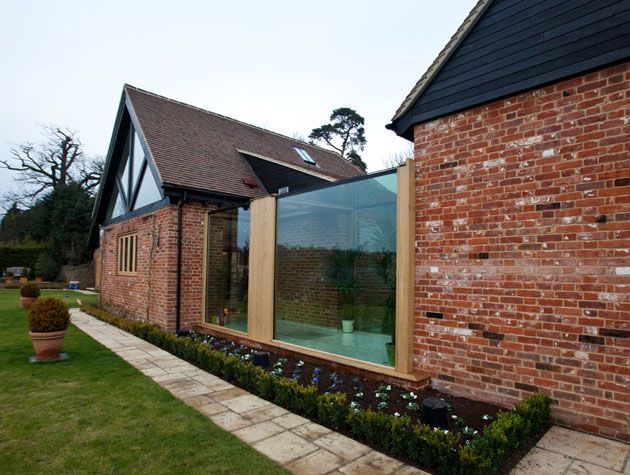A guide to permitted development rights
It's important to know what you can and can't build without planning permission
Permitted development rights allow you to extend your home without requiring full planning permission, providing you adhere to certain guidelines relating to the size and appearance of your new addition.
In some areas (classed as designated land), such as conservation areas, national parks, Areas of Outstanding Natural Beauty and world heritage sites, permitted development (PD) rights can be removed, so it’s always best to check with your local planning authority if these allowances apply.
Regulations also differ between England, Wales, Scotland and Northern Ireland. Do bear in mind that any new extension, even when done under the development rules, will still have to meet building regulations.

Photo: Clear Architects
What extensions can you build without planning permission?
- Side-return extension: This style must have a maximum height of four metres and a width no more than half of the house.
- Rear extension: Recent changes to PD guidelines in England mean that in most areas (not on designated land) you can now add a single-storey rear extension up to eight metres from the original rear wall of a detached house (previously it was four metres), or six metres from all other houses, such as semi-detached or terraced properties (previously three metres).
However, this is only a temporary change to the regulations. Any extensions built under permitted development must be completed by 30 May 2019 or risk losing out.
- Double-height addition: At present, two-storey rear extensions are also possible (not on designated land), although anything you build must not extend beyond the back wall of the original house by more than three metres or be within seven metres of any boundary opposite the rear wall. However, under proposed legislature, double storey extensions could be allowed under permitted development rights, where neighbours and planning officials will no longer be able to formally object to plans.
- Loft conversion: To fall under permitted development rights, repurposed attic space must not exceed 40 cubic metres for terraced houses or 50 cubic metres for detached and semi-detached houses.

Photo: MW Architects
The extension’s style and look
Under existing permitted development rules, any materials used for the exterior of an extension need to be of a similar appearance to those of the original house (this doesn’t apply to conservatories), so if you want to have a cedar-clad loft dormer, for example, you’ll probably need to submit a full planning application.
This doesn’t mean, however, that you can’t be adventurous with the overall appearance of your extension – a brick-built addition or rendered design that matches the original house can be combined with frameless roof lights and full-height sliding, pivot or bi-folding doors to create a modern look.

Photo: Custard Architects
Have you got permitted development rights?
If your extension falls under the standard guidelines for PD you won’t need to submit a formal application for planning permission, although it’s always advisable to check with your local authority that you do meet the PD criteria before commencing any work.
It’s also a good idea to apply for a Lawful Development Certificate, which provides proof that the work was permitted. If you decide to sell your property in the future, this is something potential buyers will demand to see as evidence that your extension or loft conversion was done legally.
To take advantage of the temporary extension to PD rights, however, you will need what is called prior approval before starting your project, which means going through the neighbour consultation scheme.

Photo: RESI
Permitted development fine print
In planning, the term original house means the property as it was first built or as it stood on 1 July 1948.
- Extensions (including previous ones) and other buildings must not exceed 50 per cent of the total area of land around the original house.
- Side extensions can be only single storey and no more than half the width of the original house.
- Any single-storey extension should be no higher than four metres; and within two metres of a boundary, no greater than three metres.
- The maximum eaves and ridge height of a two storey extension can be no more than the existing house, and not more than three metres if it falls within two metres of a boundary.
- The eaves and ridge of any extension must be lower than the existing house.

Photo: 318 Studios









